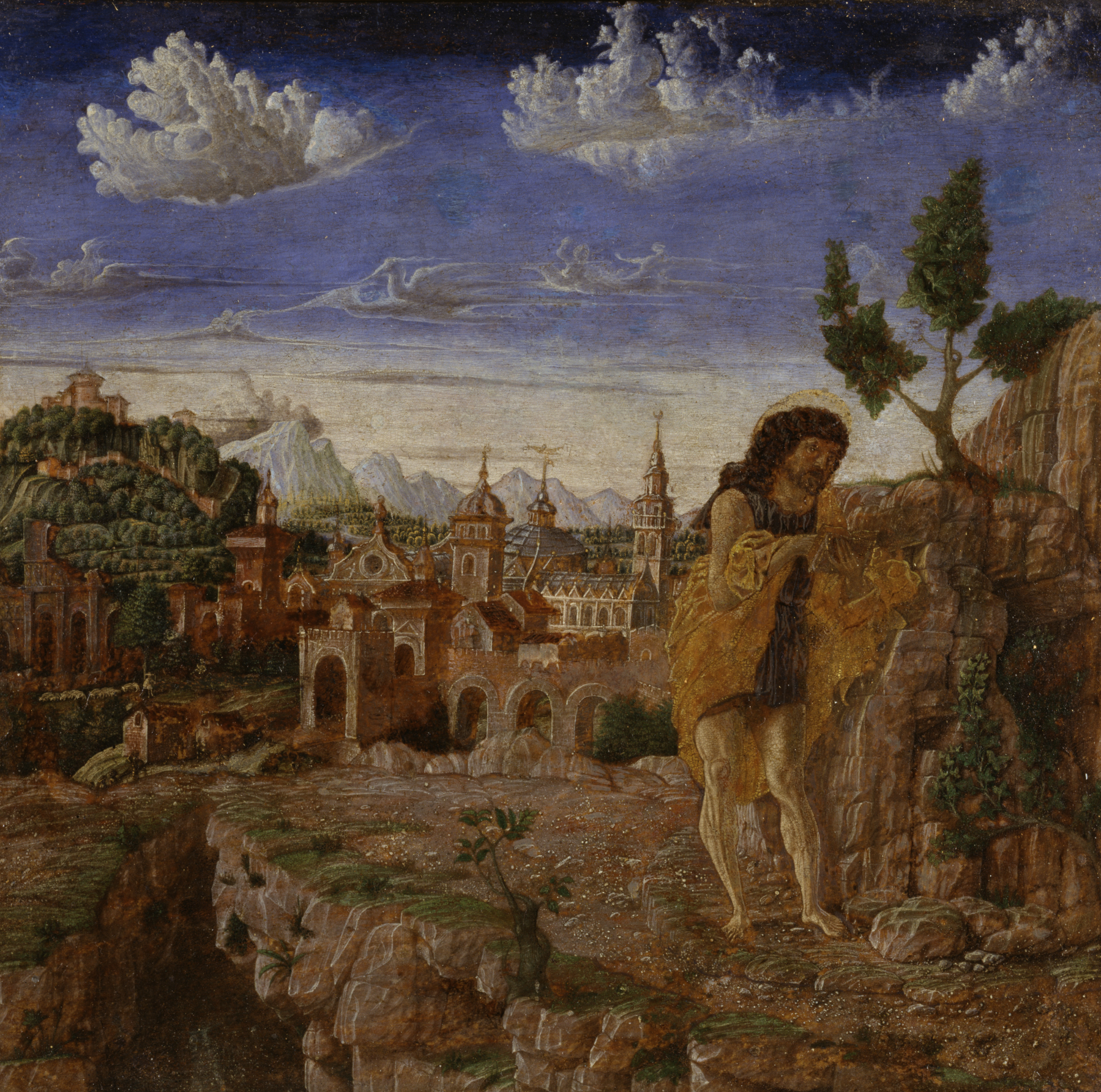Saint John the Baptist in a Landscape
(Renaissance Europe )
Saint John the Baptist was Christ's greatest prophet. He lived in the desert clad in a camel's skin, eating locusts and wild honey, and preaching repentance.
The extraordinary detail and meticulous technique in this small work reflect Giovanni's primary occupation as a manuscript illuminator. Indeed, this work is painted on parchment. The town in the background may represent Vicenza. Strange figures appear in the clouds. Images of saints in the wilderness gave Renaissance artists the opportunity of depicting landscapes, which showed their interest in representing the real world.
Provenance
Provenance (from the French provenir, 'to come from/forth') is the chronology of the ownership, custody, or location of a historical object. Learn more about provenance at the Walters.
Henry Walters, Baltimore [date and mode of acquisition unknown]; Walters Art Museum, 1931, by bequest.
Geographies
Italy, Padua (Place of Origin)
Measurements
Painted surface H: 8 7/16 x W: 8 3/4 in. (21.5 x 22.2 cm); Panel H: 9 1/4 x W: 9 5/8 in. (23.5 x 24.5 cm)
Credit Line
Acquired by Henry Walters
Location in Museum
Accession Number
In libraries, galleries, museums, and archives, an accession number is a unique identifier assigned to each object in the collection.
In libraries, galleries, museums, and archives, an accession number is a unique identifier assigned to each object in the collection.
37.1162


